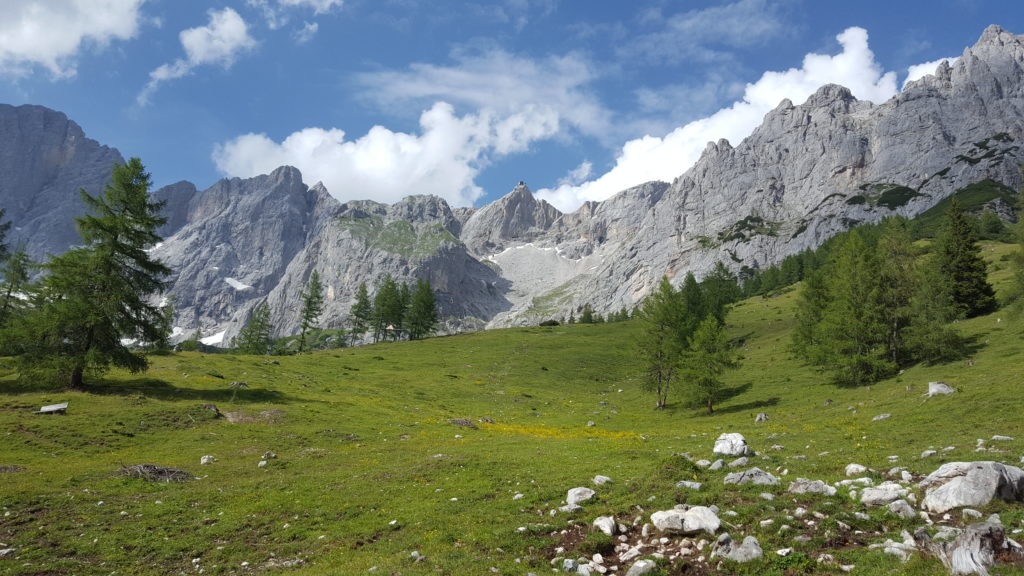For at least a decade, hut-to-hut hiking in Austria has been near the top of our travel adventure to-do list. It’s a natural fit given our family’s affinity for mountains, travel, and Austria, and I’m a little surprised that it took us so long. But the convergence of a half-century birthday, an imminent departure for college, and the yearning for a meaningful summer vacation finally brought the idea to reality in July 2017.
After much research, planning, and advice from experienced friends, we chose the Dachstein Rundwanderweg southeast of Salzburg. Hiking here would bring us quickly from the valley bottom to the treeless alpine of the Dachstein plateau, and then slowly down through forests and alpine pastures to the next valley to the north. The complete circuit takes about eight days of hiking. We opted for a partial 5-day route allowing us more time in Vienna and in other parts in Austria that we also wanted to visit. Before we left home, we had reservations at five family-run huts of various types that linked us from the train station in Schladming in the south, to the train station in Pichl-Kainisch to the north.
Day 0
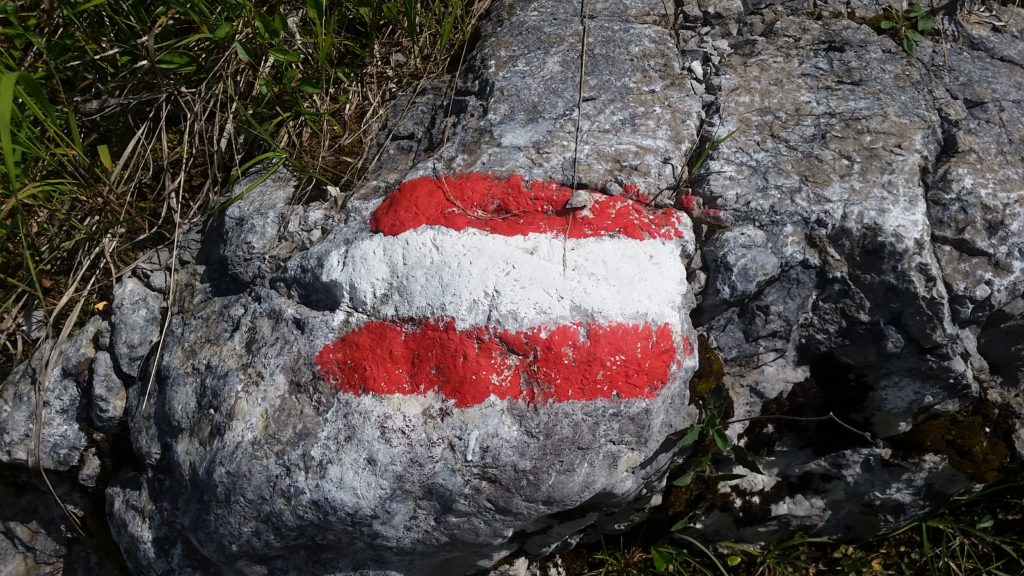
There are many trains leaving Vienna for Schadming throughout the day. The trip takes roughly four hours and requires switching trains at least once. We weren’t planning on hiking the first day so we scheduled our arrival in Schladming for the mid afternoon. This also meant a more leisurely departure from Vienna. Our destination for the evening was the Berghotel Türlwandhütte, which is conveniently located at the base of the Dachstein gondola. Our intention was to ride the gondola up the next morning, gaining elevation the easiest way possible, and starting the hike from the top. There is a bus going directly to the gondola from the Schladming train station, which also provides a good short tour of the valley. We had time in the evening to do a little wandering through the pastures high in the valley and enjoy the view from the deck of the hotel. Though challenging my definition of “hut” because of the alpine comfort, our two rooms at the Berghotel Türlwand were very pleasant and the meals were excellent. Our food plan was to arrive stocked with heavy snacks and to rely on the huts for dinner, breakfast, and the occasional packed lunch.
Day 1
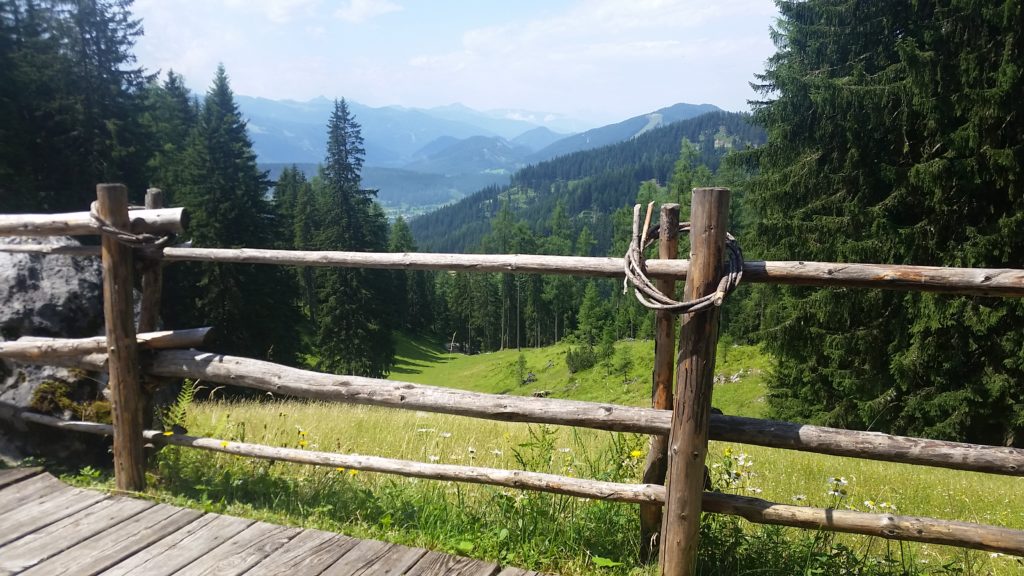
Excited about our first day of real hiking, we were greeted in the morning by the forecast of a summer storm on the Dachstein glacier. This meant potentially snow, limited visibility, and lightning while hiking across the snowfield and karstic landscape at the top of gondola. Instead of subjecting ourselves to those conditions, and at the strong suggestion of our hotel host, we opted for a “Plan B.” Rather than ascend via gondola and traverse by foot, we would traverse by bus and ascend via foot. So we jumped on the local bus up valley, and started hiking from a trailhead that would bring us up 1,000 m in elevation to the Guttenberghaus. Our pre-trip physical training paid off immediately, though we were all happy to have a rest and elderflower spritzer partway up at the Lärchbodenalm. The weather held until we emerged above the trees and were passing through a herd of goats just below the Guttenberghaus, when big rain drops started falling.
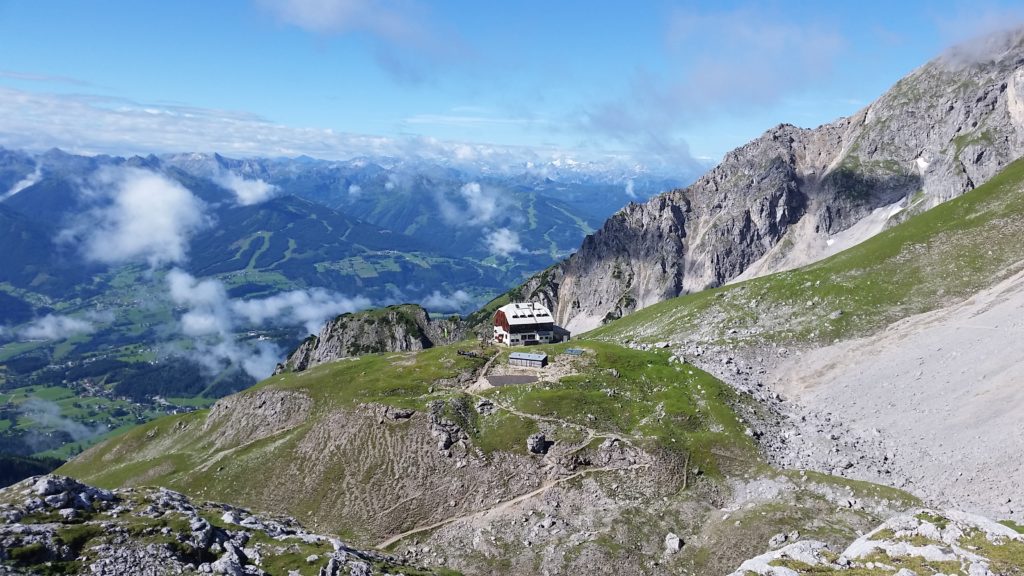
The Guttenberghaus was built in 1914 and is part of the Austrian Alpine Club. The hut is open to the public, but members of the club get steep discounts. Rustic rooms with various numbers of beds are on the top two floors. Sleeping-sheets can be rented if you haven’t brought your own (we didn’t). We were happy for an indoor schnitzel and beer dinner on the first floor. There is also an outdoor deck overlooking the valley when the weather is conducive. Water is rationed because there isn’t any surface water in this geologic region (we didn’t cross a stream until Day 5), and indeed water was the heaviest thing that we needed to carry. On the night we stayed at Guttenberghaus, we shared the hut with a bunch of young kids from an alpine summer camp!
Day 2
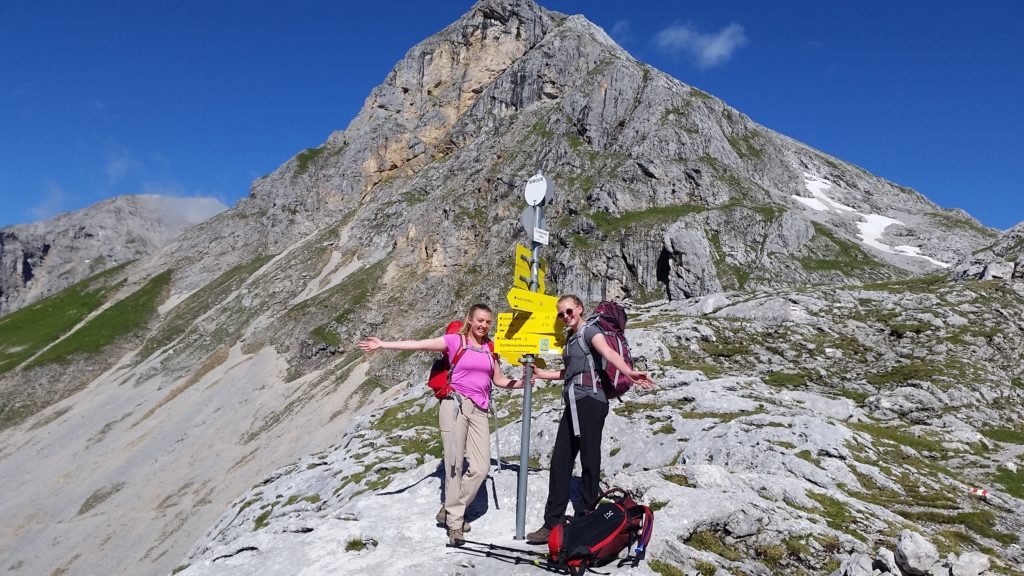
Our second day of hiking was a traverse through the rocky karstic Dachstein plateau and alpine forests to the Berggasthof Steinerhaus. Along the way there were topographical ups and downs, a few small snow crossings, and a couple of alpine lakes. The trails are generously marked by red-white-red Austrian flags painted on rocks and trees. There are signs where trails meet that estimate the time it takes to get to the next destination. It slowly became apparent that we were not moving at the expected rate to achieve those goals. Partway we pass through an alpine pasture where we heard bells before we could see small herds of cows, goats, and horses through the trees. Just a bit further on at about the halfway point, we pass an alpine hut that had just been restocked with supplies via helicopter and waved to a seventy-year-old herdsman who asked, we think, if we knew where we were going. Ten hours after starting out, exhausted from the day’s effort, we emerged from a tall forest into a dormant ski slope, only to climb to the Berggasthof Steinerhaus at the top. We were so happy to be able to rest. We shared the modern gasthof, probably busier in the winter season, with two other thru-hikers. The food was warm, filing, and excellent.
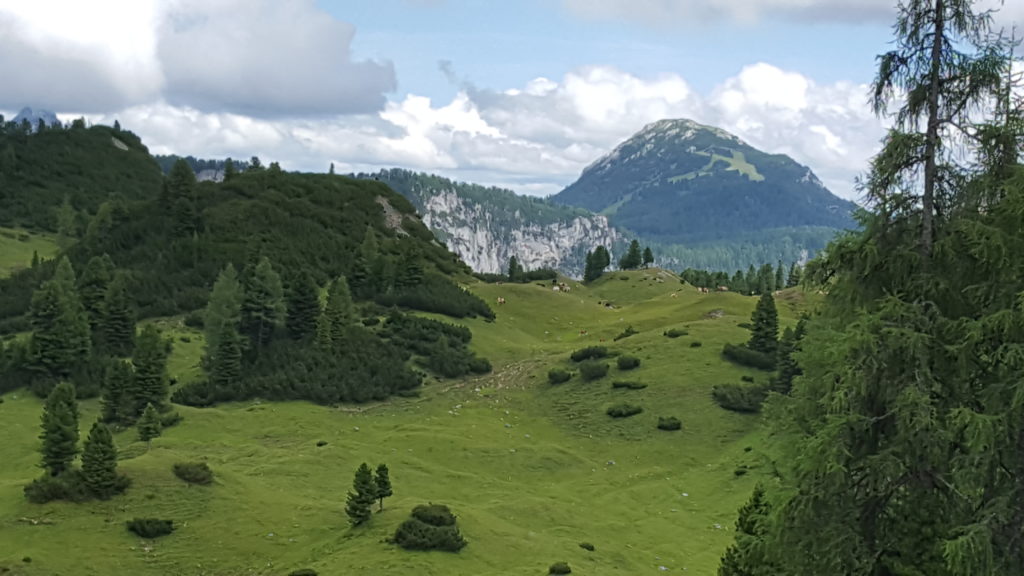
Day 3
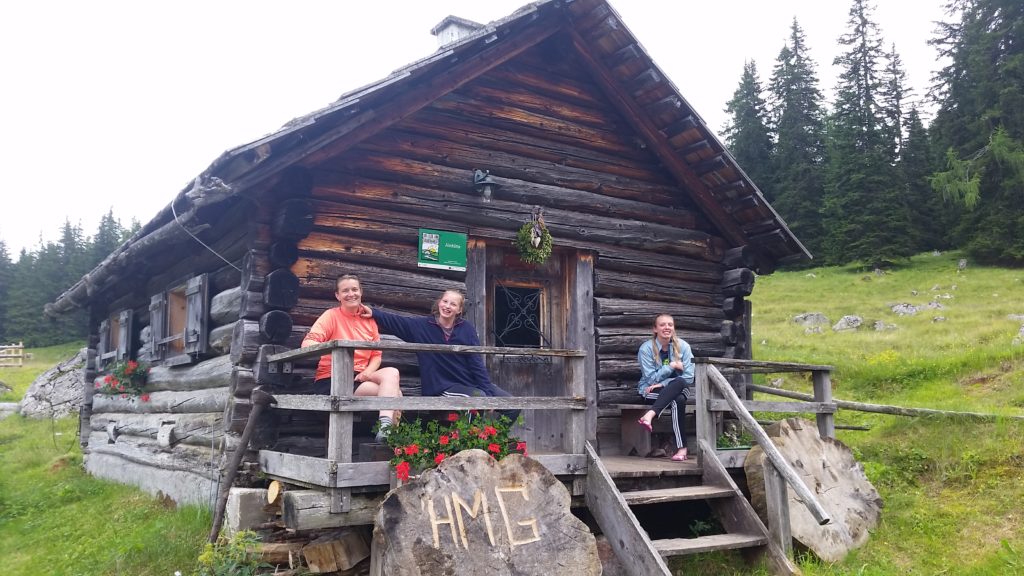
Having anticipated that Day 2 would be the hardest hike of our trip, even with the Day 1 Plan B uphill slog, we had planned a less strenuous third day. Overall it was moderately downhill through a forested landscape, but it never felt that there was a consistent descent. En route, we passed through the amazing NotGasse, an ancient mule trail through a narrow ravine full of rock carvings said to be up to 2000 years old. We made it to the Ritzingerhütte by early afternoon. This hut is a traditional summer pasture farmstead, where guests stay in a century-old log bunkhouse. As our kids attempt to make friends with the cows in the afternoon, we were joined by cyclers on day trips up from the valley. The local cheese and pine liqueur are both delicious. The girls enjoy hot chocolate made from the milk of the brown cow we could see grazing in the field. We were invited inside the main house to join the family for dinner and share stories by candlelight. During the cozy evening, we learn that we had been extremely lucky to encounter the herdsman in the alpine hut. Bodo Hell, a famous Austrian author, had spent summers writing and tending to the animals on the Ramsau for 35 years and is famous across Austria. He apparently starts the summer by hiking up with live chickens on his back! The blending of intellectual and mountain life seems to be a joyful hallmark of the region.
Day 4
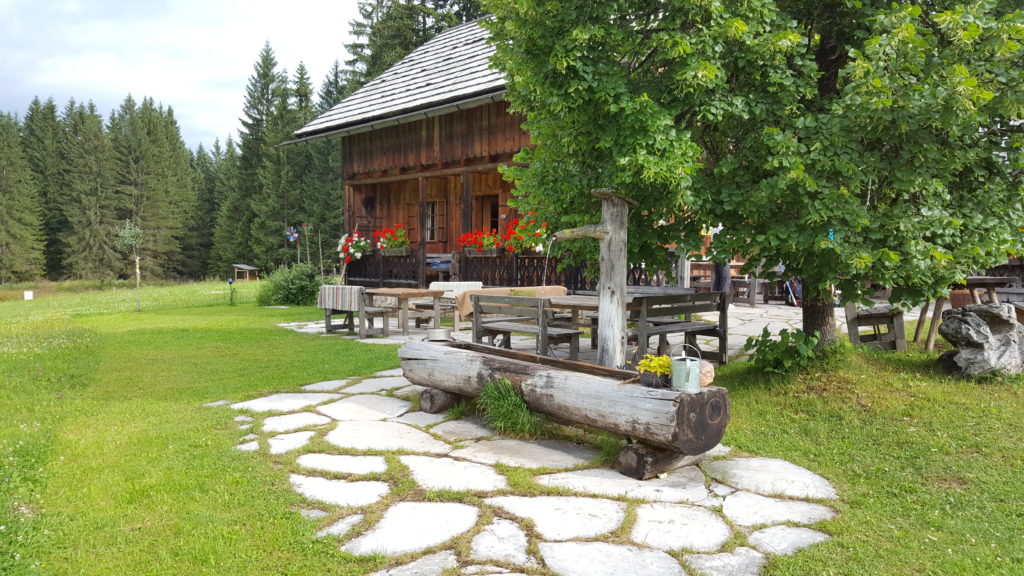
Our fourth day of hiking was promised to be quite moderate, “just up and over the hill.” The way actually took us up Hochmühleck, the highest peak in the area where we discovered our first summit cross, took a great number of selfies, ate the very last of our hearty snacks for a lovely picnic lunch, and observed a pair of men climbing the tall pines to collect seed cones for forest restoration. Finally, we made a maddeningly steep descent through trees to the Steinitzenalm. As we reach the hut, we could see and hear the first freshwater stream of the entire hike. Steinitzenalm is a newer version of Ritzingerhütte, and is indeed run by the daughter of the woman who had hosted us the night before. The cold local beer tastes particularly great here, especially when sampled with the local cheese. There is also a farm-style water spring in a wooden trough where cyclers grab a sip and wash their hands. We are taught that all water in the region is potable unless labeled otherwise. Although the sunny terrace eventually fills with cyclists enjoying beer and cheese, only two other travelers spend the night upstairs with us. There were three small rooms that share a tiny bath. Each room has a lovely view, a low, sloping ceiling, and a comfy bed. We all enjoy the afternoon sunshine and mountain air, overlooking another beautiful alpine pasture. Dinner, another local specialty is served family style, in a warm, wooden dining room.
Day 5
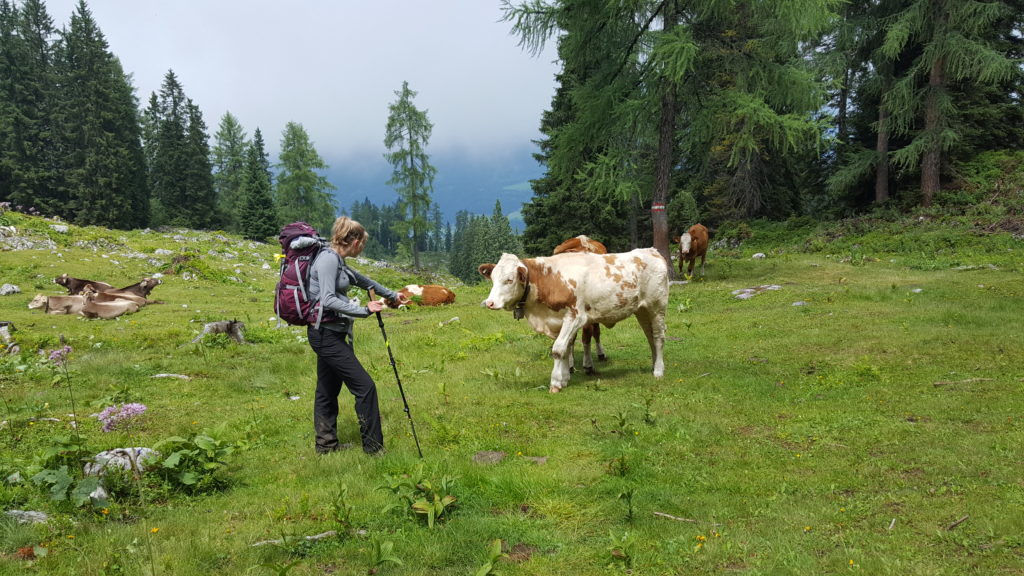
None of us are really ready for our fifth day of walking, which brings us to the train station in the village of Pichl-Kainisch and the end of our adventure. We are just getting into the groove of walking as the day’s only mode of transportation. Our leg muscles are getting stronger as the beginner’s aches are mostly gone. On the way to town, we pass more cows, sample water from a spring in a small village, and wander through lowland forests. We stop at Gasthaus Kohlröserlhütte on the shores Ödensee to get out of the rain and have some hot soup. It’s our first functional WiFi in days and no one, not even the teenagers, are excited to be leaving the mountains and re-connect. From here, it’s only a short hike on a paved road to the train. We are sad for it to be over and already scheming more walking adventures in the UK as well as a return trip to finish the full 8-day circuit.

